2019 was a remarkable year for display technology, where terms like “full screen” evolved into foldable screens, surround screens, waterfall screens, and innovations in LCD such as stacked screens and miniLED.
Today, OLEDindustry specifically highlights the foldable screen, surround screen, waterfall screen, stacked screen, and miniLED backlight technology for analysis.
Foldable Screen
2019 is considered the year of foldable phones, with major manufacturers exposing or releasing their foldable phone products. In February at MWC in Barcelona, Samsung and Huawei each unveiled their foldable phones, the Galaxy Fold and Mate X, which feature inward and outward folding designs, respectively. Later, Motorola launched the 2019 Razr foldable phone with an upward folding design. Samsung also announced the next generation of foldable phones with an upward folding mechanism, and all these products utilize AMOLED foldable screens.
Foldable Screen Panel Design
According to current information and phone designs, the main screen size of the Motorola Razr 2019 foldable phone is 6.2 inches, with a 22:9 aspect ratio and a resolution of 2142×876. The screen features a notch design that reserves space for the front camera and infrared sensor. Meanwhile, the top and bottom borders have adopted a large arc design for a more aesthetically pleasing appearance. The Galaxy Fold’s main screen measures 7.3 inches, with a 12.6:9 aspect ratio and a resolution of 2152×1536, also featuring a notch, located in the upper right corner. The Huawei Mate X has an 8-inch screen with a 10.15:9 aspect ratio and a resolution of 2480×2200. Since the Mate X uses an outward folding design, it does not have a notch. Below is a comparison of the main parameters of the three foldable phones.
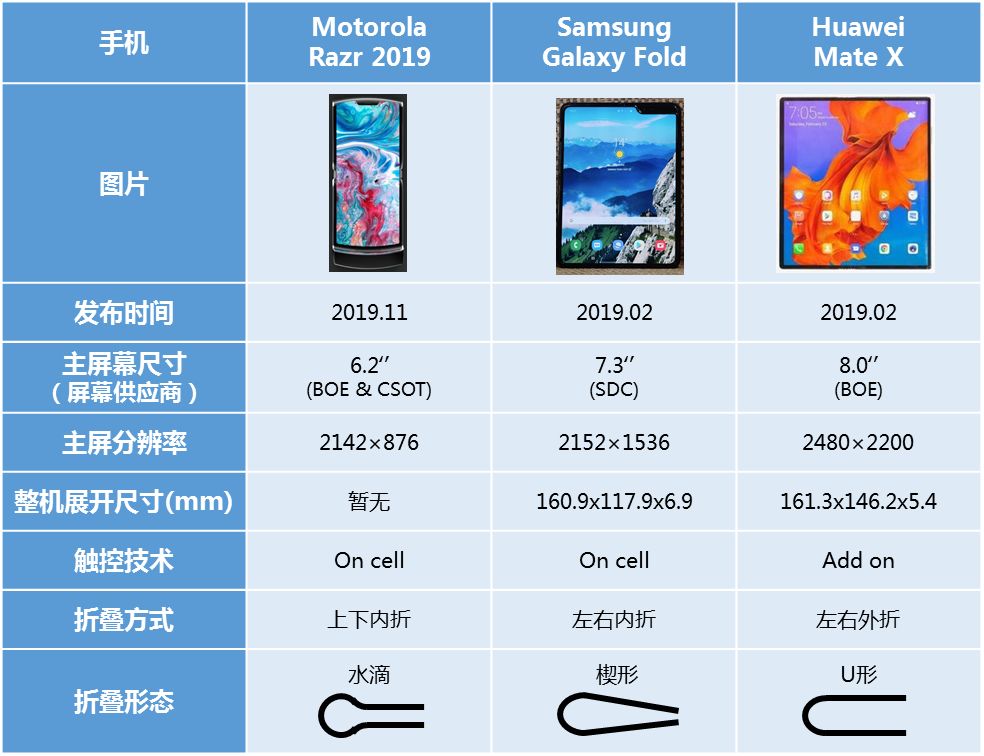
Parameters of foldable phones that have been released or are about to be released (some data and images from the internet)
The design of foldable screen panels can be categorized based on the binding position of the panel driver chips, which can be folded along the Data line direction or the Gate line direction. Currently, including the Samsung Galaxy Fold, all adopt the Gate line folding method to avoid bending the rigid Gate line, reducing the risk of line breakage. It is inferred that the flexible foldable screen of the Motorola Razr will also adopt the same folding method.

Based on the folding direction of the screen, they can typically be classified as left-right foldable and up-down foldable. The Samsung Galaxy Fold and Huawei Mate X both feature left-right folding, with the unfolded screen size comparable to a tablet. In contrast, the Motorola Razr adopts an up-down folding design, maintaining a smartphone size when unfolded and folding down to a wallet size, making it very portable.
Foldable Screen Layer Structure Design
Despite being thin, foldable screens are made of multiple layers of materials, similar to a book, which can misalign when bent. Flexible screens can also exhibit similar phenomena when folded. This is detrimental to the screen as it can easily cause separation between the film layers, leading to functional damage. Therefore, the thickness of flexible screens should be minimized, and the layered structure design is particularly important.
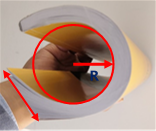
Illustration of misalignment of upper and lower layers after folding
Flexible screens typically consist of a flexible substrate layer, flexible driving layer, EL light-emitting layer, thin film packaging layer, touch layer, polarizer, and transparent cover layer. Additionally, a thin metal support layer may be added beneath the substrate layer, and a transparent protective layer above the transparent cover. For each film layer, it is crucial to minimize thickness to reduce shear stress between layers during bending, preventing separation. Since the Young’s modulus of common materials is not very high, the role of optical adhesive becomes particularly important; with its excellent elasticity, it can effectively alleviate stress between layers during bending. To reduce the thickness of the screen, the touch layer can be directly made on top of the thin film packaging layer, avoiding the use of an external touch layer and reducing overall thickness. Furthermore, the thickness of the polarizer and substrate layer can be reduced, and protective and heat dissipation layers can be eliminated to achieve a thinner overall screen thickness.
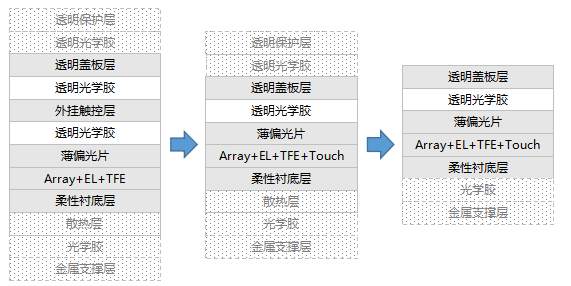
Illustration of the thinning scheme for the layered structure of flexible foldable screens
Foldable Screen Bending Mechanism Design
The bending form of foldable screens can be wedge-shaped, droplet-shaped, U-shaped, etc. Different bending forms require different designs for the bending mechanism. Wedge and droplet shapes are more suitable for inward folding, where the screen has minimal contact force with the bending mechanism. In contrast, U-shaped bending is more suitable for outward folding, where contact force is generated between the screen and the bending mechanism. The design capability of the bending mechanism reflects the folding technology level of major phone manufacturers. A well-designed bending mechanism can effectively reduce the risk of layer separation or line breakage during bending, enhancing screen folding reliability and lifespan.
Additionally, unlike traditional phones, foldable screens can develop noticeable creases in the folded state, and the appearance of these creases is closely related to the screen and folding mechanism design. According to current user feedback, the Samsung Galaxy Fold exhibits significant crease issues. However, from photos circulating online, the crease on the Motorola Razr foldable screen seems to have improved significantly, possibly due to its droplet shape design. Regardless, creases in foldable phones are unavoidable, but they do not affect the viewing experience during normal use; they only become noticeable when the screen is off or touched.
Improving Foldable Screen Reliability
For phones using foldable screens, the choice between inward or outward folding is a challenging decision. The inward folding design requires a smaller bending radius, which greatly increases the risk of damage. Consequently, the Samsung Galaxy Fold adopts a wedge-shaped folding form to prevent the bending radius from becoming too small, but this results in a large wedge gap between the two parts when folded, affecting the overall aesthetics of the device. Additionally, the inward folding design necessitates an auxiliary screen to facilitate normal calls and message reception while folded, which undoubtedly increases costs. The Huawei Mate X, with its outward folding design, has a larger bending radius and experiences less stress at the folding point, enhancing bending reliability while maintaining a slim and aesthetically pleasing device. However, the outward folding design lacks effective protection, necessitating the development of better solutions for drop and scratch resistance.
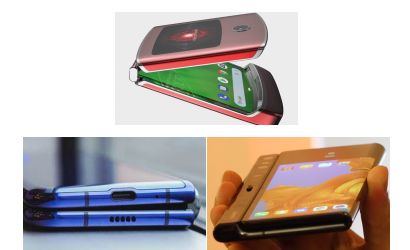
Foldable screen folding forms of phones that have been released or are about to be released (images from the internet)
In the current context where the reliability of flexible foldable screens has not yet reached the performance level of current smartphone screens, the upward folding design of the Motorola Razr may be the best choice, maintaining the characteristics of a large-screen smartphone while reducing the size for portability, and not significantly increasing costs. At the Samsung Developer Conference on October 29, Samsung unveiled its clamshell foldable screen phone, which adopts the same upward folding design as the Motorola Razr. Therefore, we speculate that upward folding flexible screens may become the mainstream design for foldable phones in the next two to three years.
Surround Screen
To discuss the surround screen, we must start with the Xiaomi MIX Alpha.
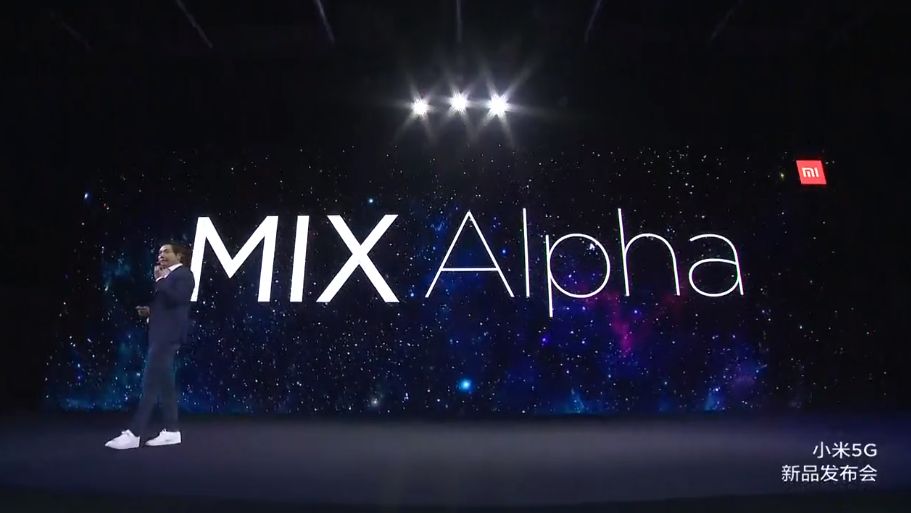
Xiaomi MIX Alpha
Surround screens began with the Xiaomi MIX Alpha concept phone, which features a screen supplied by domestic AMOLED manufacturer Visionox, utilizing a nano-silver touch solution.
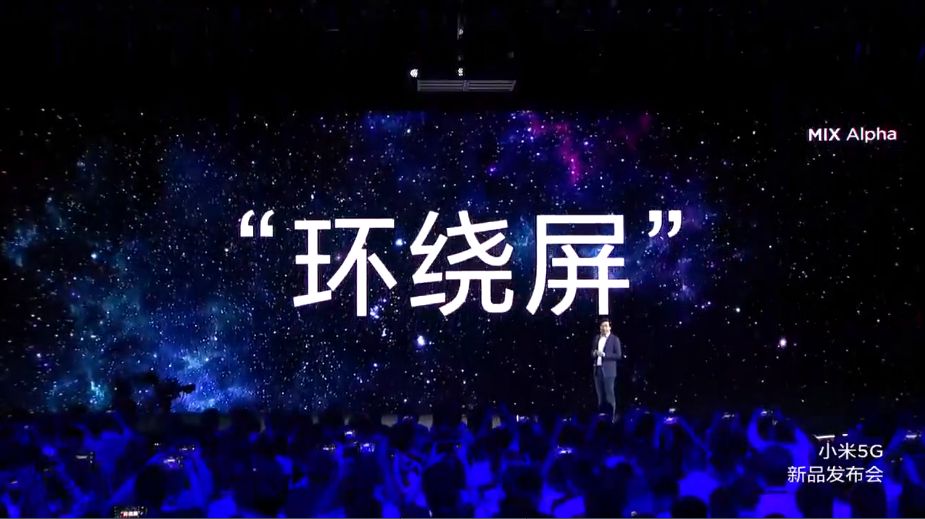
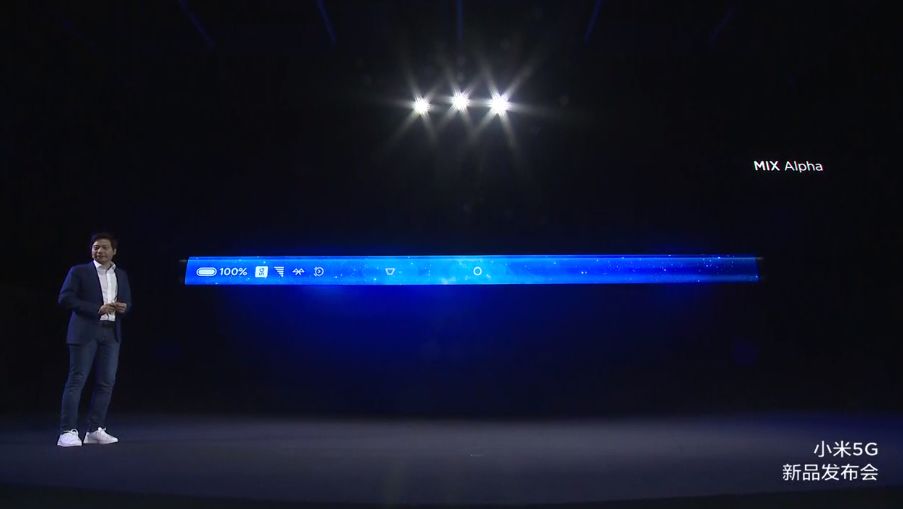
As the first model to introduce the surround screen, the Xiaomi MIX Alpha 5G surround screen concept phone sparked widespread discussion upon its release.
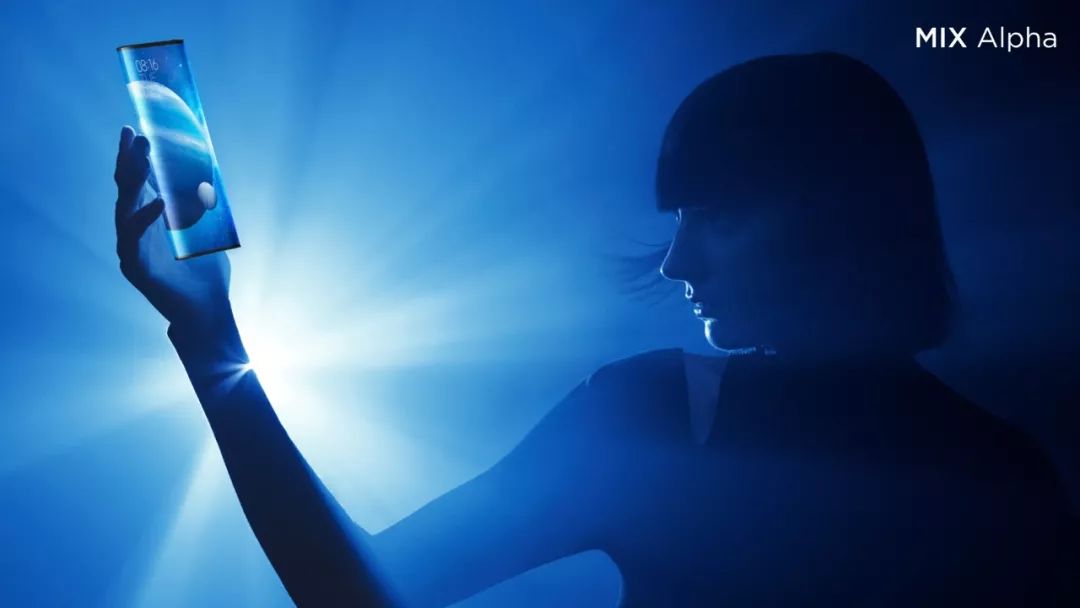
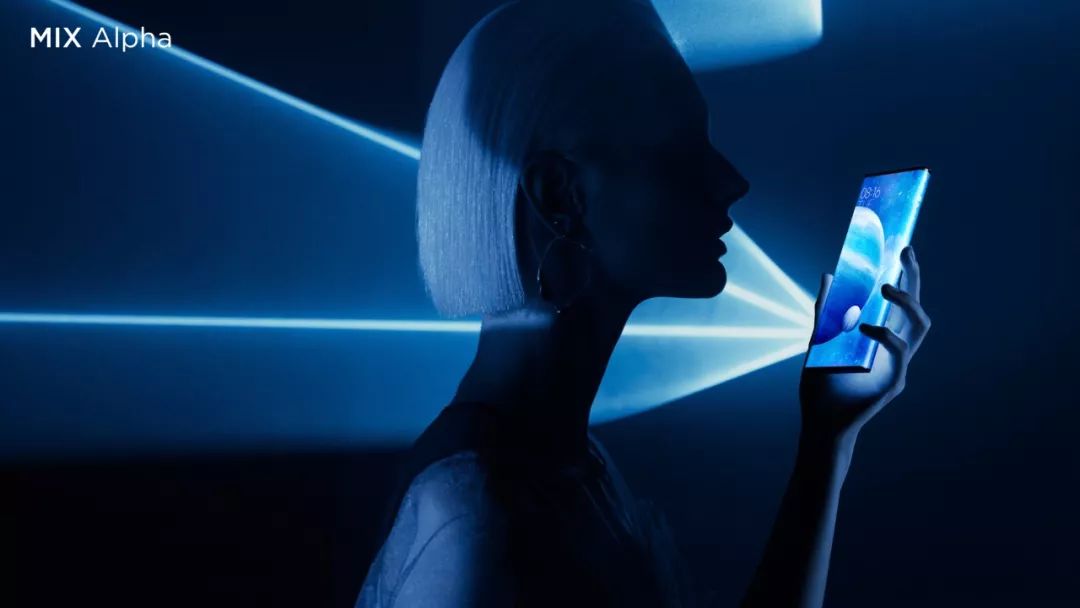
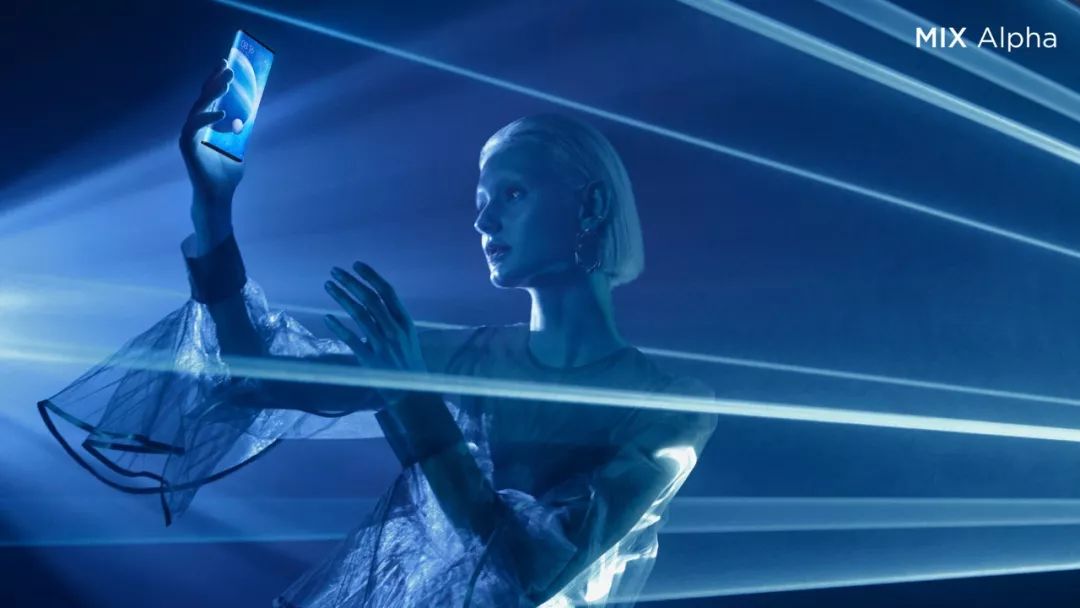
<<Swipe left to see more beautiful images
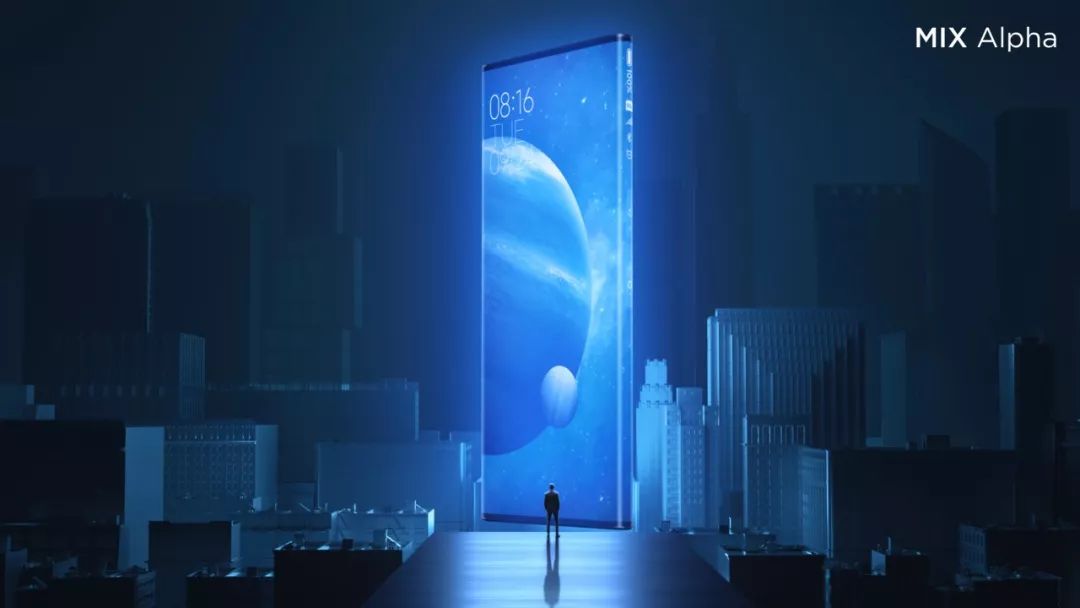
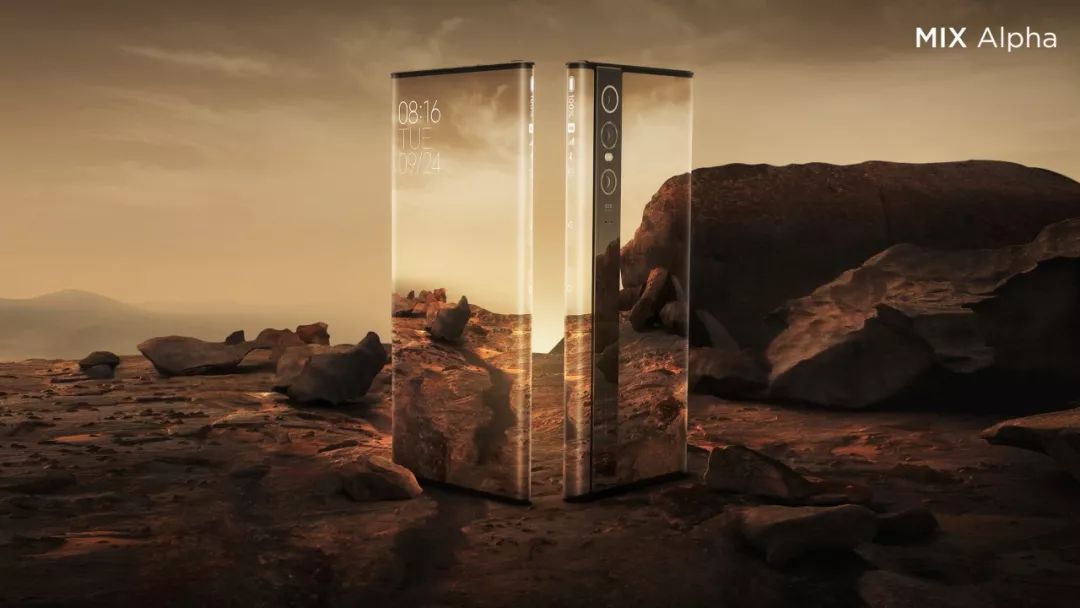
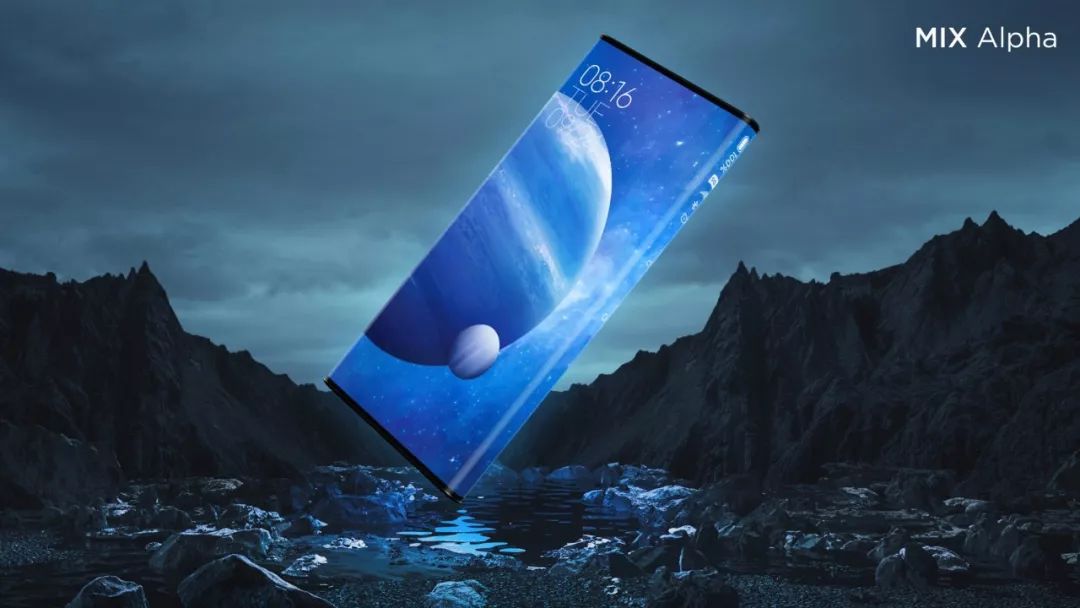
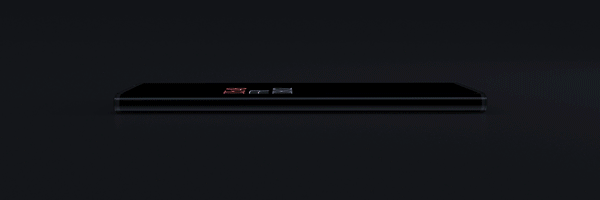
Surround Screen is surrounded by a single piece of screen
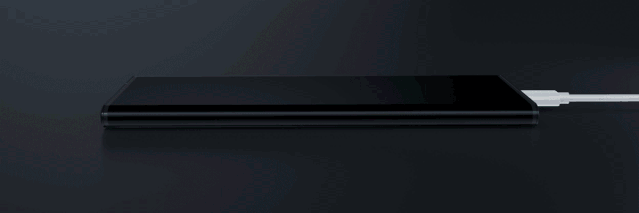
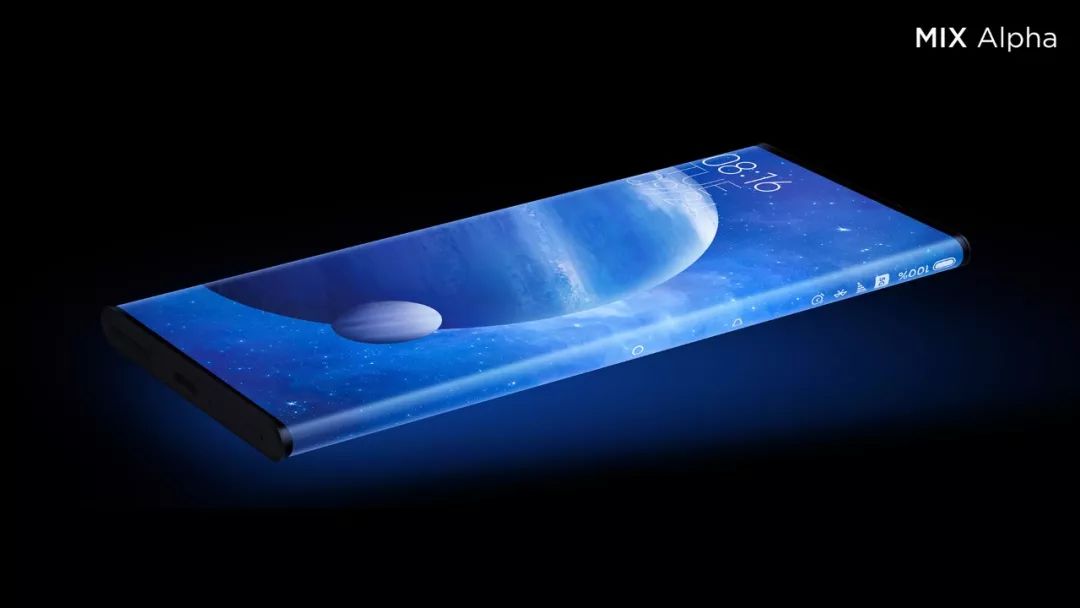
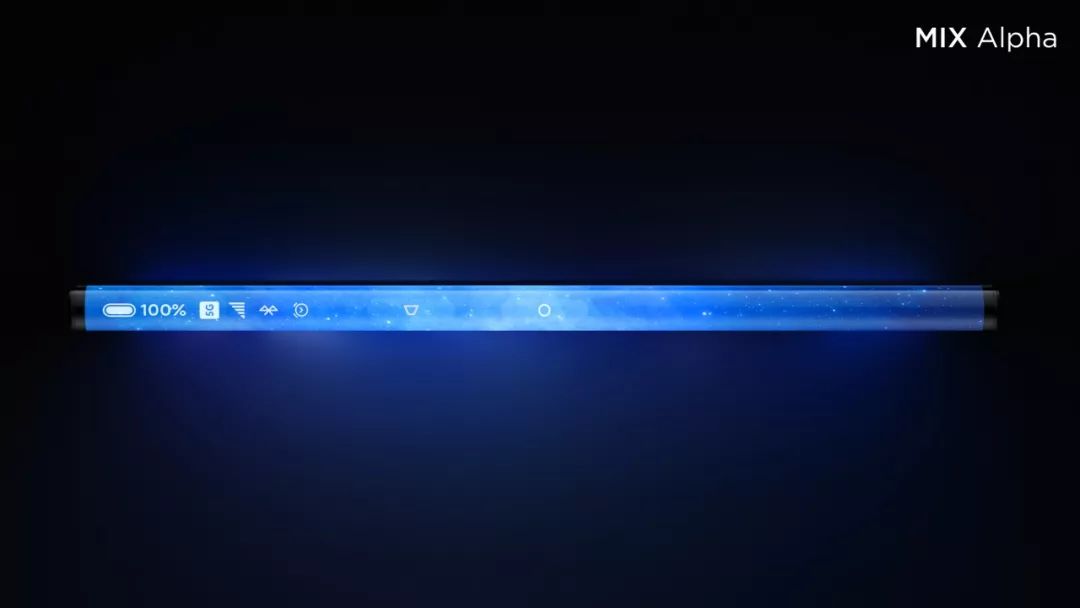
The back of the phone is surrounded by a screen, displaying common functions such as calculator, recorder, calendar, etc., which can be seen just by flipping it over.
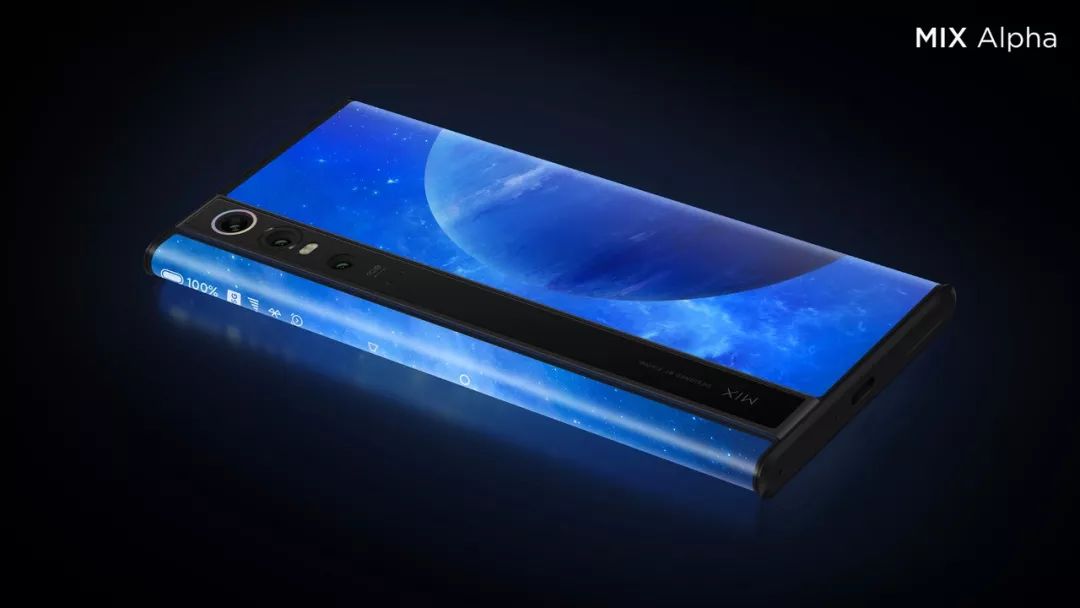
This is the surround screen that garnered attention in 2019.
Waterfall Screen
When we mention “waterfall”, a romantic image of “water flowing straight down three thousand feet” comes to mind. However, we cannot apply this directly to the “waterfall screen” of phones.
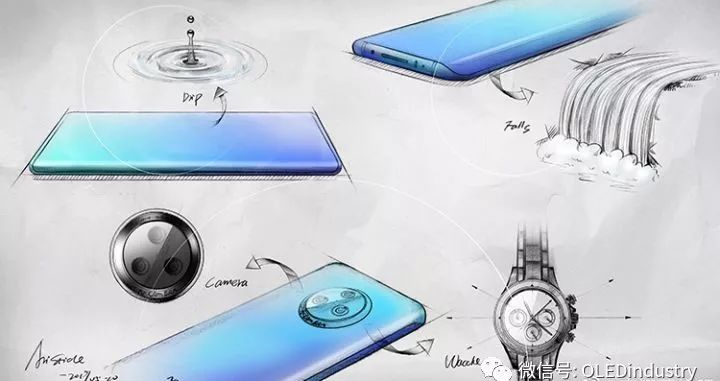
What Exactly is a Waterfall Screen?
Strictly speaking, the “waterfall screen” refers to the left and right sides of the phone’s front screen being cleverly “bent” (to be precise, it is somewhat “rolled”), closely adhering to the frame. The curvature is nearly vertical, resembling a waterfall cascading down.
To discuss waterfall screens, let’s first take a look at a video of the waterfall screen.
0/0
00:00/00:18Progress Bar, 0 percentPlay00:00/00:1800:18Full Screen Playing at 0.5x speed 0.5x 0.75x 1.0x 1.5x 2.0x Ultra Clear Smooth
Continue Watching
2019 Analysis of the Top 5 Display Technologies: Foldable, Surround, Waterfall, Stacked, and MiniLED
Reprinted, 2019 Analysis of the Top 5 Display Technologies: Foldable, Surround, Waterfall, Stacked, and MiniLEDOLEDindustryAdded to Top StoriesEnter comment Video Details
Source:China Star Optoelectronics
1. What is a Waterfall Screen?
A waterfall screen is a new concept that has emerged recently. It refers to the phone’s curved screen bending down at a 90-degree angle, hanging down the sides of the body like a waterfall:
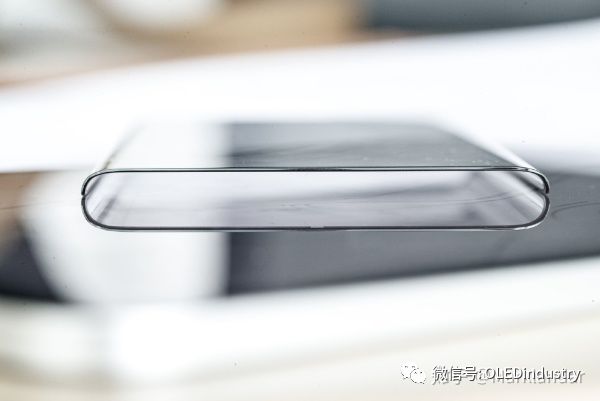
This is the vivo waterfall screen, placed on a glass table, where the reflection perfectly merges with the body into a ring.
This screen is essentially an aggressive version of the commonly seen Huawei P30 Pro and Samsung S10 curved screens. The waterfall screen takes the normal curved screen further, bending the screen from a slight curve to a completely vertical one, further compressing the side frame and eliminating the side buttons.
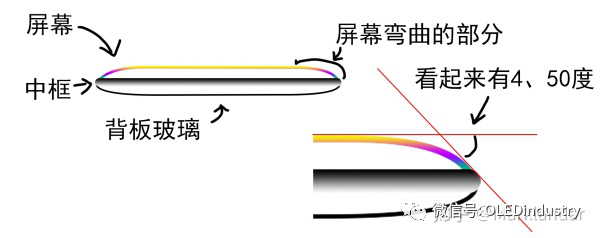
For example, the curved screen in this illustration is bent at an angle of 40 to 50 degrees.
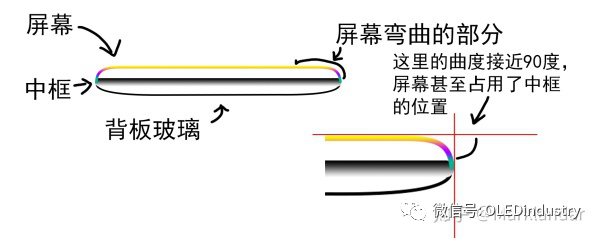
And this screen bent at 90 degrees is the waterfall screen. (All of the above are cross-sections.)

This is a waterfall screen phone from OPPO, showing a very high curvature of the screen.
2. How do OLED Display Manufacturers View Waterfall Screens?
In reality, waterfall screens are not a difficult technology for OLED companies. Why do I say this? Because forming a near 90° curvature at the edges is much easier than making a foldable screen.
Of course, OLED screens have a natural advantage in curved displays, but this does not mean that producing such screens is easy, as it requires overcoming challenges in processing and adhering 3D glass.
Waterfall screens utilize 3.5D curved glass and flexible screens for adhesion, and this process is very complex, requiring higher manufacturing standards from suppliers, so only a few screen providers can offer curved screens.
In the manufacturing process of mobile screens, once the cover glass is selected, the next step is adhesion, which integrates the cover glass with the touch and display layers to form a complete film group.
The commonly used method for 3D adhesion is vacuum adhesion.
3D adhesion generally falls into two categories: one is the adhesion of the film to the cover glass, which is a decorative adhesion process; the other is the adhesion of the screen to the glass cover, which is a functional adhesion.
1. Adhesion of Film to Cover Glass
Currently, the 3D film method is commonly used, where special ink patterns are made on PET film (or composite film), and then the film material is adhered to the 3D double-curved cover glass.
Although this process seems simple, the yield rate for decorative film adhesion in the market is not high, and it is also known as “double-curved 3D glass adhesion technology” or “3D curved vacuum adhesion process”.
2. Adhesion of Screen to Glass Cover
The principle is to place the mobile OLED screen and 3D glass cover in a vacuum chamber, using machine cylinder pressure to lower the inner film of the vacuum chamber to fully press the glass cover and glass screen together.
As shown in the diagram, after the film is completed, it will be placed on a material board (such as 3D glass) using the OMD3D adhesion process; then the film will undergo vacuum adhesion, and during adhesion, the temperature will be adjusted according to the film’s characteristics. After vacuum forming and adhesion, it will be extended to prevent bubbles; once completed, it will be molded.

This process is several levels more challenging than the first decorative adhesion.
However, if the curvature is large, only vacuum adhesion can be chosen, and for future potential 4R adhesion, due to its unique four-sided bending characteristics, it will be challenging to avoid wrinkles and bubbles in areas with large curvature even with vacuum methods.
Currently, the industry has adopted customized inflatable bags or plastic parts to alleviate this issue, but it has not been fully resolved.
Are bubbles generated during the adhesion process?
This issue is very troublesome.
Thus, the following issues need to be considered during the adhesion process:
1. During full adhesion, ensure the OLED screen is clean without any residual glue.
2. After adhesion, perform bubble removal treatment, controlling the bubble removal pressure between 5-8 pressure units, maintaining a constant temperature of around 30 degrees, and the time can be between 10-15 minutes.
3. Currently, curved vacuum adhesion machines are equipped with heating, and the temperature should not be too high, as it can easily cause reverse bubbling. The materials purchased should be of good quality.
4. When placing the glass cover, avoid excessive adhesion, as it will worsen the curved adhesion effect.
5. Ensure the OCA dry adhesive is neat, with no visible bubbles, and dust should not fall onto the OLED screen.
In addition to 3D glass processing and adhesion technology, waterfall screens also need to consider whether the screen’s refraction effect will impact the edge effects.
After all, in older OLED curved screens, color deviation often occurs at the edges. From OPPO’s own exposed video, it seems that this issue is well covered.
These factors have led to a situation where there is high demand for curved glass and waterfall screens in the market, placing phone manufacturers at a disadvantage in negotiations with screen providers, inadvertently increasing the manufacturing costs of phone components.
3. What Can Waterfall Screens Bring?
Why are manufacturers so keen on waterfall screens? The main reason is to keep up with current aesthetic trends, enhancing the phone’s appearance by increasing the screen-to-body ratio, making consumers willing to spend money on these devices, thus boosting sales. Previously, manufacturers employed various methods to pursue aesthetics, even defining various screen standards, such as true full screens, which sparked considerable consumer debate.
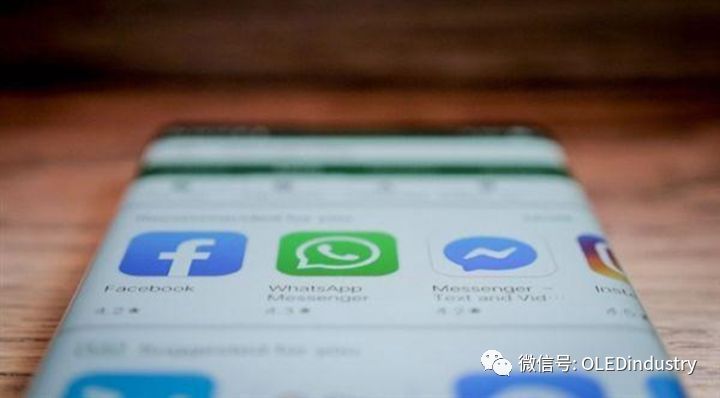
In addition to adopting waterfall screens, manufacturers have made many modifications to ensure that phones with waterfall screens meet the aesthetic preferences of the general public. For example, OPPO has made its new phone longer to accommodate the new waterfall screen, with the OPPO Find X, which is currently considered a beautiful phone, featuring a 19.5:9 aspect ratio, while the new “waterfall screen” from OPPO is expected to be even longer, possibly adopting a 21:9 ratio.
Vivo has also exposed hands-on videos of its real device, which also boasts a very high screen-to-body ratio. According to exposed information, the vivo NEX3 phone has a screen-to-body ratio of 99.6%, almost reaching 100%. The closer to 100%, the more challenging it becomes to achieve. The visual impact of the vivo NEX 3 is also quite stunning. This is the aesthetic advantage these high-end phones can achieve, allowing OPPO and vivo to gain more attention in the mid-to-high-end smartphone market and attract younger consumers.
4. Why Are Many Skeptical About Waterfall Screens?
1. From the Perspective of Preventing Accidental Touches
Samsung has a program called “edge touch,” which is officially produced by Samsung but is not pre-installed on phones:
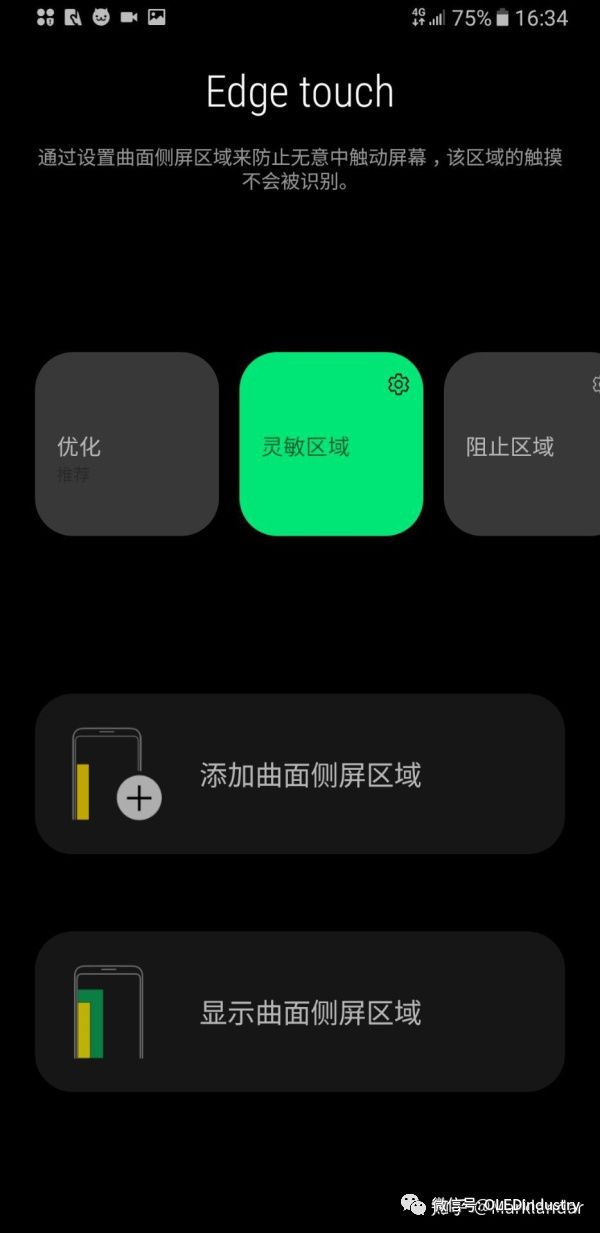
The principle of edge touch is very simple: it disables the touch layer on the screen’s edge to prevent accidental touches.
When I used a Samsung phone a while ago, I set up edge touch but gradually realized a problem:
“If edge touch disables the touch on the screen’s edge to prevent accidental touches, then why does Samsung install a touch layer in that area? If you did it, and then I have to turn it off, I really don’t understand the purpose of that.”
Therefore, I would rather change the way I hold the phone than enable edge touch.
For waterfall screens, if the bent part can be touched, but I have to disable it for normal phone handling, then really, let’s just stick to cheap and practical things (like slightly curved screens).
If the waterfall screen’s curved area has no touch layer, or only the part simulating buttons can be touched—though it still seems odd, it is better than “having touch but needing to turn it off for normal use.”
I believe that the manufacturers releasing waterfall screen phones will certainly equip them with better anti-accidental touch software than Samsung’s edge touch. If the stunning waterfall screen can provide an equally smooth operating experience, then really:
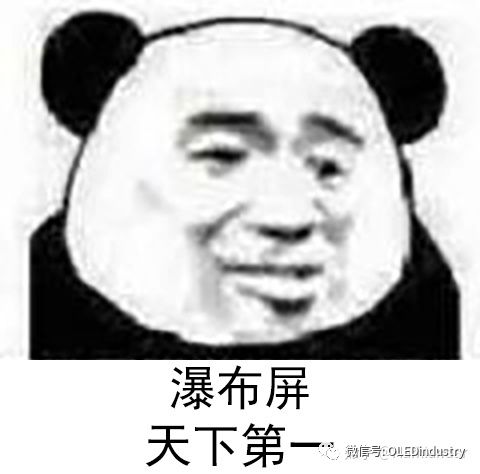
(But thinking about Samsung’s frustrating edge touch… I still can’t be optimistic about software-based solutions for preventing accidental touches.)
2. From the Perspective of Practicality
The waterfall screen has an inherent contradiction from the start:
The screen is meant to be viewed—but users cannot see the part of the screen that bends at 90 degrees.
If we call the bending angle A and the width of the bent part L, then the width D that users can truly see from the front is approximately D≈L·cosA. (This is only an approximation, not an exact equality: because the curved screen has curvature.)
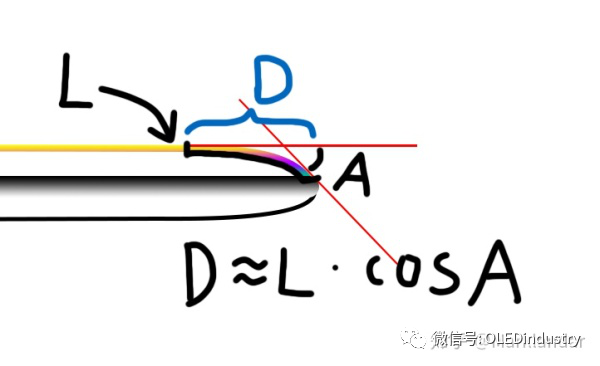
When the bending angle is 0, which is a flat screen, D=L; as A increases, cosA decreases; when A reaches 90 degrees, cosA becomes 0.
With a little imagination, we can conclude that the more a curved screen bends, the less we see from the front; when bent to 90 degrees, that part of the screen is entirely invisible.
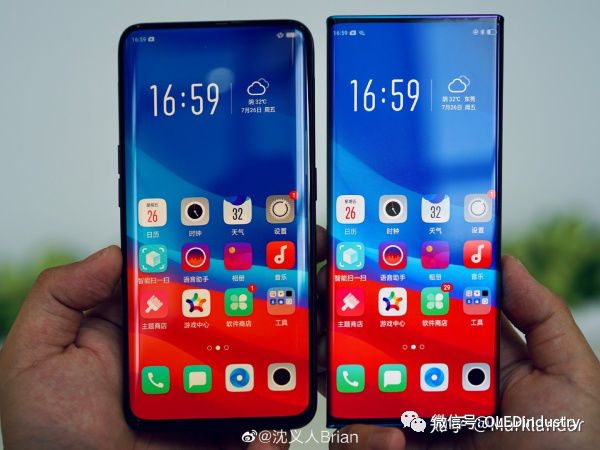
This image from OPPO’s vice president shows the Find X on the left, which is thicker; on the right, the waterfall screen phone is thinner because we can’t see the two sides of the screen at all.
Clearly, the waterfall screen renders a large portion of the screen invisible and unusable. Therefore, from a practicality standpoint, the waterfall screen is more of a gimmick than a practical solution.
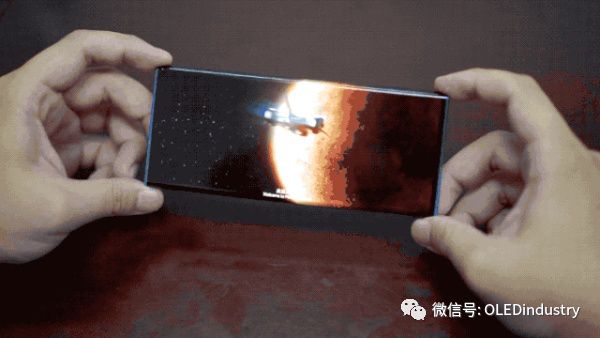
When watching a movie, we lose the upper and lower parts of the video.
(The waterfall screen occupies the frame position in a normal phone. Imagine our phone, where the frame, power button, and volume button have all been replaced by the screen; it looks stunning and exaggerated, but it’s really not necessary.)
In Conclusion
The main complaint about waterfall screens is their price. 😭
If phone manufacturers could offer us waterfall screens at the same price as regular phones, I would gladly accept it: no extra cost for such an appealing new technology—even if this new technology has some flaws, no one would mind;
But if the price of a phone with a waterfall screen skyrockets from 4000 yuan to 6000 or even 8000 yuan, I would prefer to spend less and buy something more practical.
Thus, the radical appearance of the waterfall screen must offset the price increase and practicality decrease, which is the fundamental reason for our skepticism.
BD Cell Stacked Screen
The stacked screen uses two screens stacked together. This technology employs a Dual Cell design with black and white cells and color cells, using HDR (high dynamic range rendering) technology, pixel partitioning technology, and micron-level ultra-fine light control technology to achieve a super high contrast ratio of 160000:1—black details approaching OLED TV levels, while the brightness of bright areas exceeds that of OLED TVs.
Although this new technology is named “stacked screen”, industry experts prefer to view it as a “backlight technology”.
What is BD cell stacked display technology? Just look at the image below!

Mini LED
With the innovation in display technology, the backlight of displays has also advanced, undergoing several technological milestones including CCFL, traditional LED backlight, quantum dot backlight, and miniLED backlight. CCFL backlight: high power consumption, narrow color gamut, color deviation during prolonged use. Traditional LED direct backlight: although it can achieve dynamic partitioning and is cost-effective, it is thicker and consumes more energy.
Traditional LED side-lit backlight, while achieving thinness, lacks dynamic partitioning; quantum dot backlight: capable of achieving wide color gamut but at a high cost and with slight toxicity; miniLED backlight: offers energy savings, thinness, wide color gamut, ultra-high contrast, and fine dynamic partitioning, thus overcoming the disadvantages of other backlight methods.
According to TrendForce LED research estimates, by 2023, the output value of MiniLED backlight will reach 340 million USD (only the output value of MiniLED backlight, excluding other driver ICs and back panels).
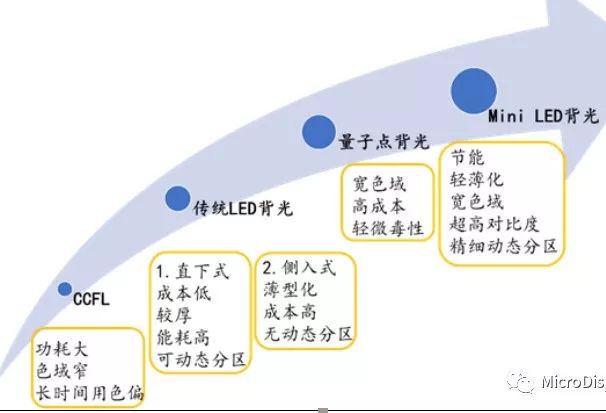
The development of LCD backlight Source:International Display Expo, China Star Optoelectronics RGB Division, Guoyuan Securities Research Center
The “LCD+miniLED” backlight technology employs a direct-lit LED backlight approach. Traditional LED direct-lit backlight cannot achieve thinness, while side-lit backlight requires space for the light source to be installed on the side of the light guide plate; even if thinness is achieved, some side space is still needed. The “LCD+miniLED” backlight method shrinks the size of traditional LED chips to the range of 100μm to 200μm, transforming dozens of LED beads in side-lit backlight into thousands, tens of thousands, or even more direct-lit backlight sources. This solution allows for thinness, adjustable regional brightness, and higher color fidelity and contrast, achieving 8K display effects.
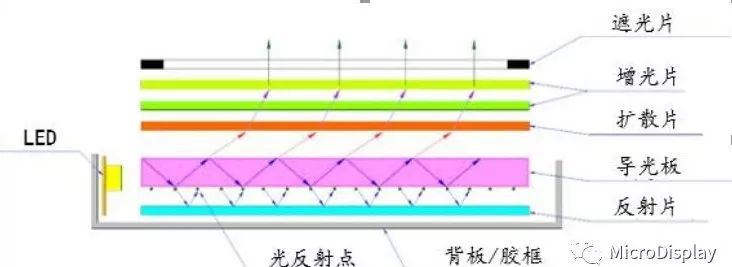
Traditional side-lit LED backlight
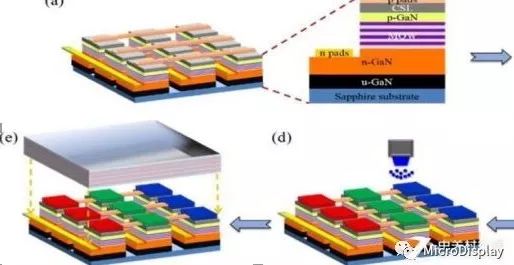
miniLED backlight Source:Sohu, Guoyuan Securities Research Center
MiniLED employs flip-chip MiniLED chips to achieve uniform light mixing without the need for secondary optical design using lenses. Due to its small chip structure, it allows for a higher number of local dimming zones (Local Dimming Zones) to achieve a higher dynamic range (HDR), resulting in better contrast effects; on the other hand, it can shorten the optical mixing distance, thereby reducing the overall thickness for ultra-thin designs. MiniLED backlight can combine with Local Dimming technology to provide a better visual experience. Based on the brightness and darkness of various areas in the signal, MiniLED can control the corresponding backlight area’s switch and brightness in real-time, making blacks appear blacker, whites appear whiter, and colors more natural and vibrant.
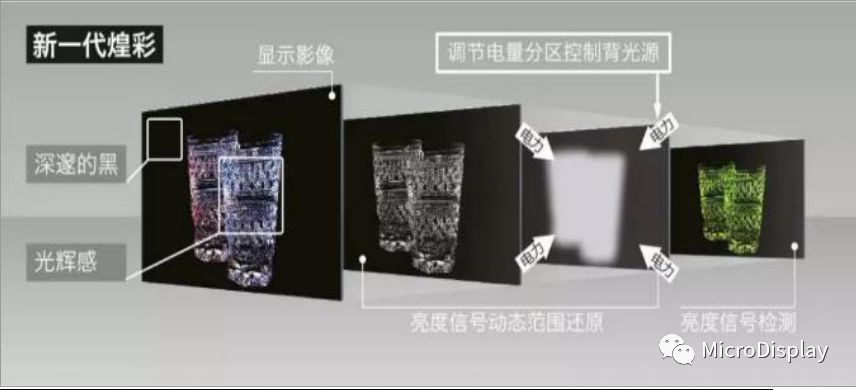 Local Dimming zoned dimming Source:Guoxing Optoelectronics RGB Division, Guoyuan Securities Research Center
Local Dimming zoned dimming Source:Guoxing Optoelectronics RGB Division, Guoyuan Securities Research Center
Market Prospects of MiniLED Backlight in Large-Sized TVs
Due to production yield constraints, high-end OLED TVs have long faced high costs, while miniLED can achieve curved and narrow-frame display effects at relatively reasonable costs, and it also possesses wide color gamut, high contrast, and thinness characteristics, making it expected to shine in the large-sized TV backlight field. According to statistics from Aowei Cloud Network, as of June 2018, the key sales sizes for TVs were 55 inches, 32 inches, and 65 inches, with the largest growth seen in the 65-inch size.
MiniLED backlight is an important weapon for the LCD camp to counter OLED. Despite OLED having captured some of the high-end display market with its high definition, high picture quality, and high contrast features, it has faced ongoing criticism for high costs and low lifespan issues, providing an excellent opportunity for the LCD camp to reclaim the high-end display market.
Figure 12:Comparison of LCD and OLED Performance
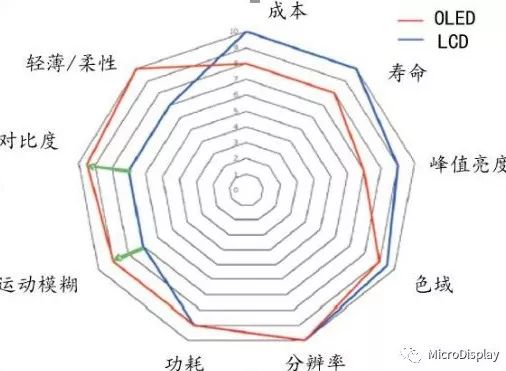
Source:Optoelectronic Technology, Guoyuan Securities Research Center
Market Prospects of MiniLED in Small-Sized Applications
Full screen—an important trend in mobile display technology. In October 2016, Xiaomi released the MIX concept phone, which started warming up the full-screen market in China; by 2017, nearly all major phone brands had crossed the 80% screen-to-body ratio threshold; by 2018, various high screen-to-body ratio technologies such as pop-up cameras, notch screens, and AAHole screens flourished.
Advantages of Full-Screen Phones:
-
Better Portability: Full-screen phones enhance the experience of large-screen phones. For instance, the 6.4-inch Samsung S8+ full-screen phone is about the same size as the 5.5-inch iPhone 7 Plus, making it easier to operate with one hand and more portable.
-
Stunning Visual Effects: Compared to regular phones, it has narrower top and bottom areas and thinner borders, providing better aesthetic design and delivering a more impactful visual experience with outstanding screen visuals.
-
More Content Presentation: Full screens can present an unobstructed view on a limited body, allowing users to display more content, making it more convenient for reading and browsing.
Figure 13:Trends in Mobile Screen-to-Body Ratio from 2016 to 2019
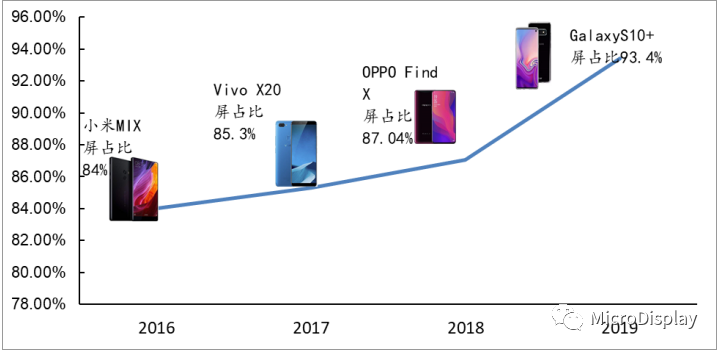 Source:Guoyuan Securities Research Center Compilation
Source:Guoyuan Securities Research Center Compilation
MiniLED+LCD—an alternative technology path for achieving high screen-to-body ratios in phones besides OLED. Currently, the mainstream technology for achieving high screen-to-body ratios in high-end smartphones is OLED, which is almost monopolized by a few manufacturers like Samsung due to patent protection and technical barriers, limiting the bargaining power of terminal manufacturers. This, in a sense, hinders the penetration of high screen-to-body ratio phones into mid-to-low-end models. Furthermore, the reliability of OLED screens needs to undergo broader market testing (as seen in the Huawei green screen incident at the end of 2018). Terminal manufacturers urgently need to seek alternative, economical, and more reliable ways to achieve high screen-to-body ratios outside of OLED paths, leading to the resurgence of mature LCD technology.
Since the traditional side-lit backlight scheme requires space for side-lit LED beads, the traditional “LCD+side-lit LED” backlight method cannot achieve high screen-to-body ratios under the premise of thinness. The emergence of miniLED completely resolves this issue—by shrinking the size of LED chips and using direct-lit LED backlight without occupying side space, it can achieve high screen-to-body ratio display effects. Additionally, since it can achieve high dynamic range screen effects through Local Dimming design, it can present more detailed screen images, making its thickness nearly comparable to OLED screens, with equally impressive performance. It is evident that miniLED has the potential to compete with the currently popular OLED screens in the small-sized display market.
Figure 14:Xiaomi’s miniLED backlight solution
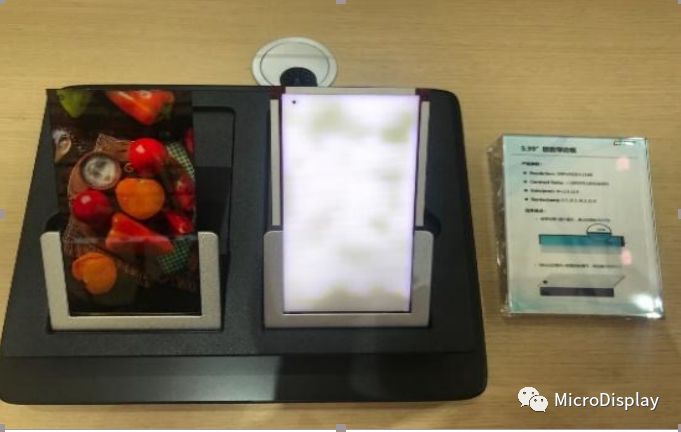 Source:International Display Expo
Source:International Display Expo
MiniLED backlight displays have controllable, hollowing, bendable, small chip sizes, low power consumption, high contrast, high HDR effects, and high clarity advantages.
Compared to OLED displays, miniLED backlight displays have advantages like higher peak brightness, wider color gamut, lower costs, longer lifespan, better stability, and a mature supply chain.
Comparison of Ordinary LCD, OLED, and miniLED+LCD Backlight Display Characteristics
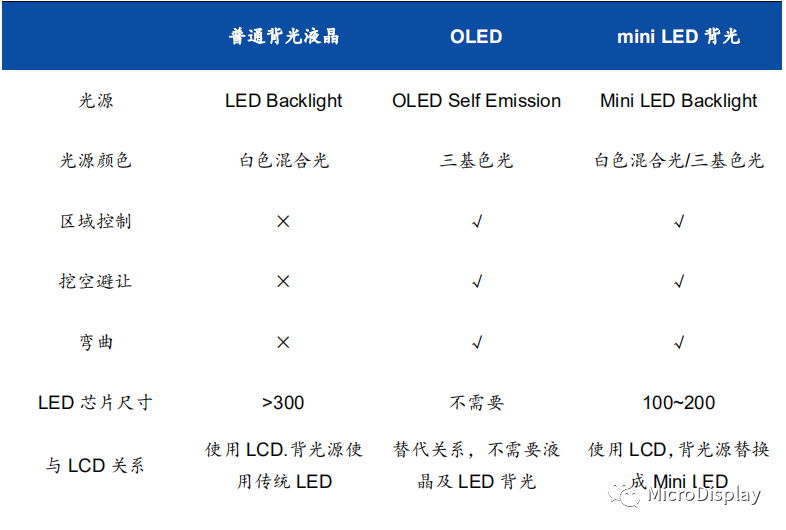
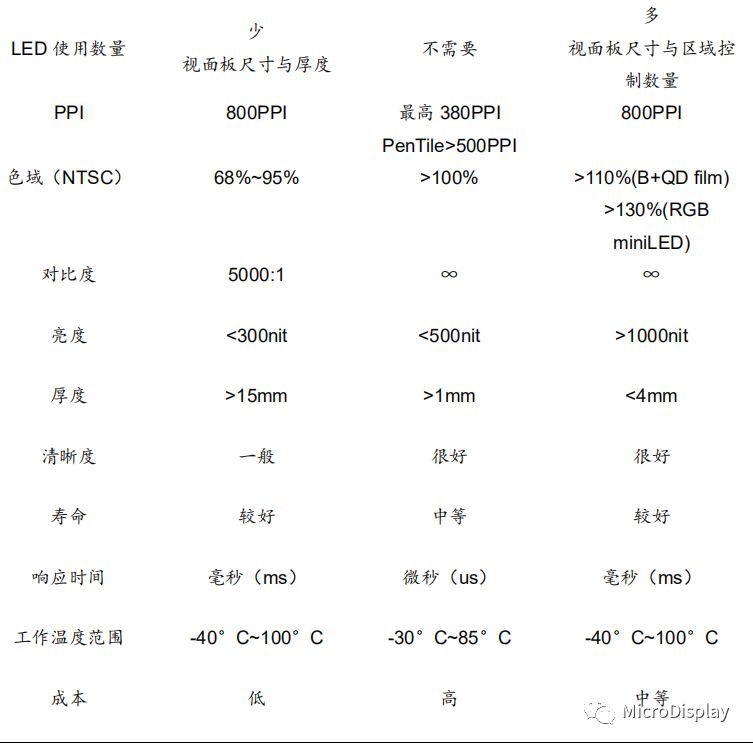 Additionally, cost factors will be another important consideration for terminal manufacturers. For example, the cost of a 6-inch mobile panel in 2018: the cost of traditional LED backlight LCD panels is about 20-30 USD, the cost of flexible OLED is about 80-100 USD, and the cost of LCD panels using MiniLED backlight design is about 40-50 USD. Unlike the somewhat immature OLED supply chain, both LED and LCD supply chains are very mature, and the essence of miniLED is merely a new application of an old technology; once large-scale applications begin, its overall costs are expected to decrease further.
Additionally, cost factors will be another important consideration for terminal manufacturers. For example, the cost of a 6-inch mobile panel in 2018: the cost of traditional LED backlight LCD panels is about 20-30 USD, the cost of flexible OLED is about 80-100 USD, and the cost of LCD panels using MiniLED backlight design is about 40-50 USD. Unlike the somewhat immature OLED supply chain, both LED and LCD supply chains are very mature, and the essence of miniLED is merely a new application of an old technology; once large-scale applications begin, its overall costs are expected to decrease further.
Looking ahead, as miniLED backlight matures and terminal brand manufacturers increase their acceptance, mobile backlighting will be another strong engine driving the rapid growth of the miniLED industry. The next step for miniLED development is Micro LED, which has been widely discussed in 2019, but since it has not yet been mass-produced, it will not be elaborated here.
Total investment of 13.5 billion yuan! Another 6th generation AMOLED flexible module and 5G smart terminal project has landed in Shucheng.
The first World Display Industry Conference | What black technologies did BOE, Visionox, and China Star showcase…
Breaking! Panasonic announces exit from the LCD panel business.
Just in! The world’s largest silicon-based OLED manufacturer has been completed and put into production.
Chairman of Helitai, Wen Kaifeng, is under investigation.
Huawei Mate X repair costs announced; screen repair price is 7080 yuan.

↓↓ Join the industry technology group where you can chat all night! Would you like to join?↓↓
Admin WeChat: OLEDindustry2
